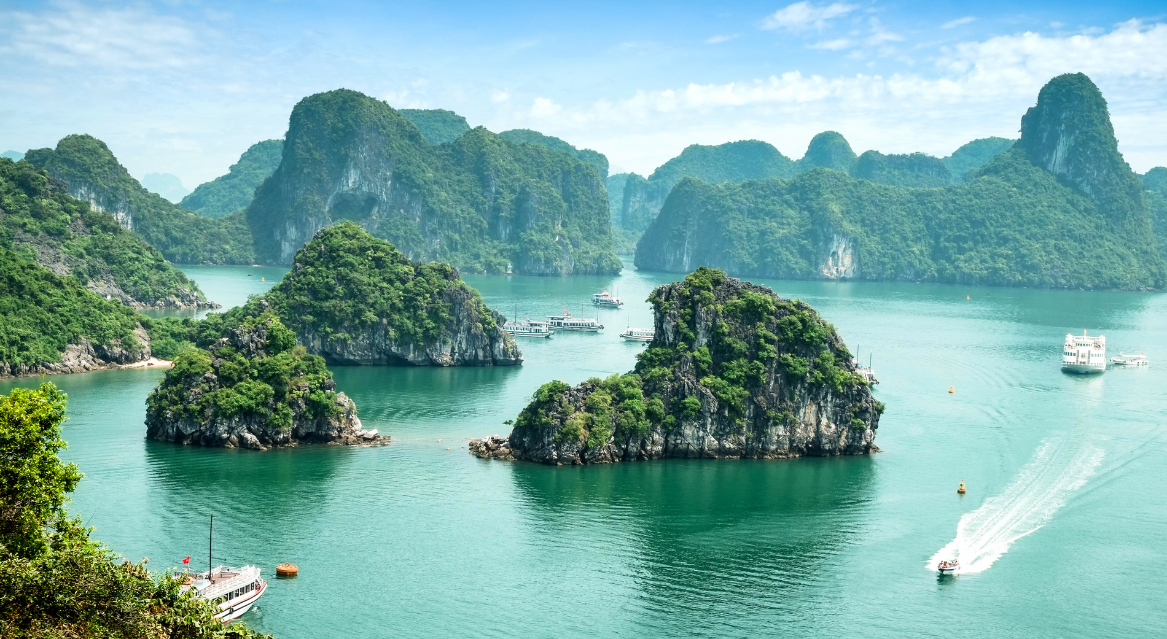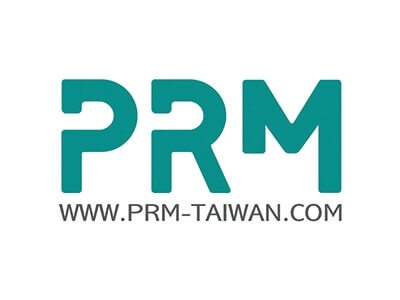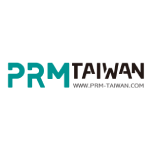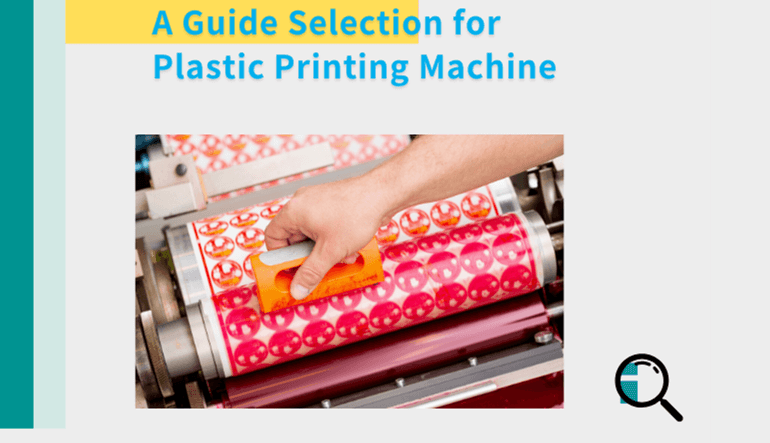What Are The Advantages And Challenges of Vietnam’s Plastic And Rubber Industry From The Perspective of Foreigners?

After decades of development and rapid economic growth, Vietnam has established itself as one of the unignorable regional economic powerhouses, with an astonishing rising consumption for goods matching the rapid growth, making Vietnam the one of largest economic entities and markets in Southeast Asia. What are the advantages of Vietnam, making it so accretive to foreign investors and international buyers, and what are the potential challenges Vietnam will face in the present and in the future?
Vietnam's Advantages
The most intuitive advantage of Vietnam to compete with other countries is Vietnam’s geography, affordable educated labour, and relatively stable political environment. Firstly, Vietnam has a long coastline facing east and south to one of the important trade routes of the world, the East Sea (South China Sea) trade route, giving Vietnam a huge advantage in focusing on export, either via the East Sea (East China Sea) to Japan, USA, or via the Indian Ocean to India, Europe, or other ASEAN countries. To the north, Vietnam borders China, allowing Vietnam to massively import raw materials and components for further assembly and export to Western nations for high profit, this advantage was enhanced after the U.S.-China trade war. Making Vietnam one of the perfect places for foreign companies to relocate their factories from China for export. Secondly, Vietnam’s labour is affordable while still maintaining a level of skill and education, Vietnam’s upper secondary school graduation rate is one of the highest in ASEAN, with a 58.1% graduation rate higher than their ASEAN competitor Thailand’s 47% according to UNICEF Global database on completion rate released in May 2022. Thirdly, Vietnam’s political environment is much more stable, in comparison to countries around Vietnam, like Myanmar, Laos, China, and Cambodia. The Vietnamese government maintains consistent and stable economic policies for local businesses to grow and for foreign investors to safely invest. Though there are still some politically sensitive border disputes with China that create tensions from time to time, there are no significant threats that may harm and disrupt business like coups, riots, or revolts.
In addition to the advantages mentioned above, Vietnam has signed many free-trade agreements, making low-tax or tariff-free exportation one of Vietnam’s greatest advantages that many won’t have thought about in the first place. Many well-known trading agreements and partnerships have included Vietnam such as CPTPP, RCEP, ASEAN, and countless FTA with many countries, which established “Made In Vietnam” more competitiveness in price and delivery time than most other countries.
From the foreigners’perspective, these advantages of Vietnam have made Vietnam stand out from the rest of ASEAN and other Asian countries, Financial Times has announced “Vietnam’s economic moment has arrived” in one of their articles published in July, and many people agree with this statement, believes that Vietnam would soon be the most suitable country for business in Southeast Asia or perhaps in entire Asia. However, there are still some challenges that await Vietnam, some difficulties may even be fatal if Vietnam fails to overcome them, and drowns Vietnam into the middle-income trap.
Vietnam's Challenges
To avoid the middle-income trap, Vietnam has to face challenges such as the free-trade agreements backlash, Chinese investors’ fear of anti-Chinese sentiment, and the global trend of going green and automatisation.
Although having multiple free-trade agreements and being part of ASEAN, CPTPP, and RCEP, is one of Vietnam’s strengths in competing with other developing countries, some foreign news has depicted signs that these agreements may backlash. According to Deutsche Welle’s report in July of this year, since RCEP took effect this year, the industrial dynamic between ASEAN and China has gradually adjusted and transformed in favour of China. For instance, after the U.S.-China trade war, China suffered a 3.2% decline in exports in the first half of this year, but the Chinese exportation percentage to ASEAN has increased by 1.5%, especially the export of electromechanical equipment and components to ASEAN have dramatically increased 23%. Essentially, Vietnam has to upgrade its industries to be able to compete and utilise the advantage of the free-trade agreements, otherwise, Vietnam’s market will be overrun by cheaper and better products from those countries that have upgraded their industries, which would arguably devastate Vietnam’s economic and destroy the industry that been replaced by foreign products.
Another challenge that many people are not aware of is the Chinese investors’ fear of anti-Chinese sentiment in Vietnam, despite the pandemic and a series of political factors caused many factories, investors, and business owners to relocate outside of China, and many have chosen Vietnam as their primary option, but most of them are mere western or Japanese business. The News Lens reported that “though Vietnam is the primary country to invest for Taiwanese and foreign companies, to the majority of Chinese companies, the political risk and Vietnam’s past record of anti-Chinese sentiment persuade them to prefer Thailand over Vietnam and Indonesia.” Thus, Vietnam must persuade the Chinese investors that large anti-Chinese protests like the one in 2014, would not happen again or ensure their personal and property safety if the protest broke out.
The last and perhaps the most difficult challenge that Vietnam is facing right now is the global demand for sustainable development and automation of Industrial 4.0. The effect of global warming and the environmental issue has significantly shown and devastated some countries and regions, further enhancing the global trend of enforcing sustainable development into essential criteria for businesses to operate in Europe and Japan, even the factories in Vietnam must comply, otherwise your products will be tax more by the Carbon Border Adjustment Mechanism (CBAM) or even gets decline from exportation to these countries, subsequently weaken Vietnam’s competitiveness.
Moreover, a transformation and upgrading of the industry are inevitable, the plastic and rubber industry in Vietnam must revolutionise its supply chain and production structure, slowly makeshift from massively producing cheap products to exporting high-value products, most Vietnam producers are still relying on machines that are outdated that’s too dangerous to operate, too expensive to maintain, too pollutive, and too inefficient. Despite affordable labour being and still being one of Vietnam’s greatest strengths, the labour cost will sufficiently increase like how Taiwan, Korea, and China have experienced. The government needs to enrich the quality and structure of the education system, enhancing skilled labourers and educated personnel to better match the industrial upgrades that are to come. Meanwhile, enterprises must begin the process of transformation and upgrade that improves productivity and reduces carbon emissions when they still have the capital to do so, including infrastructural, supply chain, and machinery upgrades, reducing the needed low-skill labour and training engineers in the process.
Why Taiwan?
As previously mentioned, manufacturers in Vietnam are now at a turning point. To continue the decades of rapid economic growth, Vietnamese manufacturers must begin the process of industrial transformation and upgrade. Particularly in the plastic and rubber industry, where many manufacturers are still using outdated or low-quality machines that they purchased right after Đổi Mới in the 1990s, now they need a new machine to borrow steam to continue running, which Taiwanese plastic and rubber machines will be the perfect match for Vietnamese manufacturers.
Why Taiwanese machines you may ask, truly there are some manufacturers like ARBURG in Germany that build better machines than many Taiwanese machinery manufacturers, or Chinese machines that are way cheaper than Taiwanese machines. However, when investing in your future, you should consider more than just the price or presume to buy the very best.
The answer to why you should invest in a Taiwanese machine to upgrade your factory is down to the price, market demand, logistics, and after-sales maintenance. Firstly, don’t take a huge leap. Even though the end goal is to provide the best product for consumers for the highest profit, jumping from an outdated machine to the best machine in the industry is just too risky, you may bankrupt yourself before making enough profit from the highest quality of the product you made. However, the end goal is still providing the product that the market demands, thus continuing to use cheap machines would not earn you a greater profit and weaken your competitiveness as time passes.
Secondly, even if the manufacturer can afford the expensive machine, it takes time for the market’s demand for quality to grow, and in the meantime there may not be enough demand for the manufacturer to profit.
Lastly, the hidden factor that many wouldn’t even consider is the possible logistical nightmare and after-sales maintenance. From shipping the machine to delivering repair components to waiting for engineers to repair the machine, the longer the supply chain is, the more difficult and costly it will be. Most of the big brand machines are assembled and shipped from Europe, which is over 10,000km away. In comparison, Taiwan is only 1,700km away from Vietnam and is under a 2-hour flight for any after-sales maintenance. The logistical issue can also be resolved with Taiwanese machine, as Taiwan have a complete manufacturer chain from small screw or chips to much bigger gears like mould and cooling system, which make ensures almost every part of a machine that may need to be repaired can be ship from Taiwan, which is much more affordable and reduce the time of delivery.
Some may question whether the quality of the Taiwanese machinery will be sufficient for Vietnamese plastic and rubber industrial upgrade, as Taiwanese machines are relatively cheaper than machines from Europe, Japan and Korea. Thanks to the Taiwanese economic miracle of building a good industrial foundation and unswerving craftsmanship from generations, Taiwanese machines are much better in quality and durability, which is why the Taiwanese machinery industry is renowned around the globe and is able to continue thriving after 4 decades.
Therefore, if you as a manufacturer in Vietnam wish to catch up with the global trend and maintain your company and your product’s competitiveness in the international market, then investment transformation and upgrade will be necessary, and Taiwanese machines will be your best option. Taiwanese machines allow you to produce medium to high-quality products with reasonable cost in equipment and maintenance, in response to the increased demand for better quality in Vietnam. If you wish to learn more details regarding the trend of the plastic and rubber industry or have grown interested in Taiwanese machines, then welcome to come to PRM’s booth in VietnamPlas from 18-21 of October this year. See you soon!
We have over 200 of the biggest and many of the smallest Taiwanese machinery manufacturers on our site and contacts with many more. Whether you are looking for full lines such as, recycling machines extruders, blow molding machines, injection molding machines and printing machines, or auxiliary equipment and parts such as gearboxes, barrels, screws, molds, dies, control systems and virtually anything related to the plastic and rubber industries including packaging. If it’s made in Taiwan, we will find it for you!





